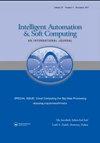Robust Node Localization with Intrusion Detection for Wireless Sensor Networks
IF 2
4区 计算机科学
Q2 Computer Science
引用次数: 2
Abstract
Wireless sensor networks comprise a set of autonomous sensor nodes, commonly used for data gathering and tracking applications. Node localization and intrusion detection are considered as the major design issue in WSN. Therefore, this paper presents a new multi-objective manta ray foraging optimization (MRFO) based node localization with intrusion detection (MOMRFO-NLID) technique for WSN. The goal of the MOMRFO-NLID technique is to optimally localize the unknown nodes and determine the existence of intrusions in the network. The MOMRFO-NLID technique encompasses two major stages namely MRFO based localization of nodes and optimal Siamese Neural Network (OSNN) based intrusion detection. The OSNN technique involves the hyperparameter tuning of the traditional SNN using the MRFO algorithm and consequently increases the detection rate. In order to assess the enhanced performance of the MOMRFONLID technique, a series of simulations take place and the results reported superior performance compared to existing techniques interms of distinct evaluation parameters.基于入侵检测的无线传感器网络鲁棒节点定位
无线传感器网络由一组自主传感器节点组成,通常用于数据收集和跟踪应用。节点定位和入侵检测是无线传感器网络设计的主要问题。为此,本文提出了一种新的基于多目标蝠鲼觅食优化(MRFO)的无线传感器网络节点定位与入侵检测(MOMRFO-NLID)技术。MOMRFO-NLID技术的目标是最优地定位未知节点并确定网络中是否存在入侵。MOMRFO-NLID技术包括两个主要阶段,即基于MRFO的节点定位和基于最优连体神经网络(OSNN)的入侵检测。OSNN技术利用MRFO算法对传统SNN进行超参数调谐,从而提高了检测率。为了评估MOMRFONLID技术的增强性能,进行了一系列模拟,结果表明,与现有技术相比,在不同的评估参数方面,MOMRFONLID技术的性能优于现有技术。
本文章由计算机程序翻译,如有差异,请以英文原文为准。
求助全文
约1分钟内获得全文
求助全文
来源期刊

Intelligent Automation and Soft Computing
工程技术-计算机:人工智能
CiteScore
3.50
自引率
10.00%
发文量
429
审稿时长
10.8 months
期刊介绍:
An International Journal seeks to provide a common forum for the dissemination of accurate results about the world of intelligent automation, artificial intelligence, computer science, control, intelligent data science, modeling and systems engineering. It is intended that the articles published in the journal will encompass both the short and the long term effects of soft computing and other related fields such as robotics, control, computer, vision, speech recognition, pattern recognition, data mining, big data, data analytics, machine intelligence, cyber security and deep learning. It further hopes it will address the existing and emerging relationships between automation, systems engineering, system of systems engineering and soft computing. The journal will publish original and survey papers on artificial intelligence, intelligent automation and computer engineering with an emphasis on current and potential applications of soft computing. It will have a broad interest in all engineering disciplines, computer science, and related technological fields such as medicine, biology operations research, technology management, agriculture and information technology.
 求助内容:
求助内容: 应助结果提醒方式:
应助结果提醒方式:


